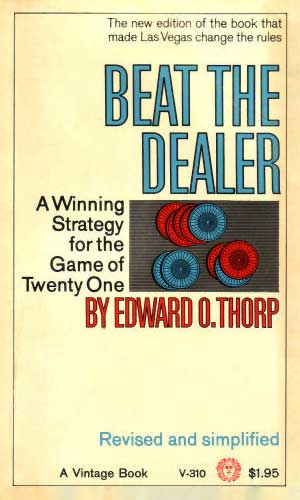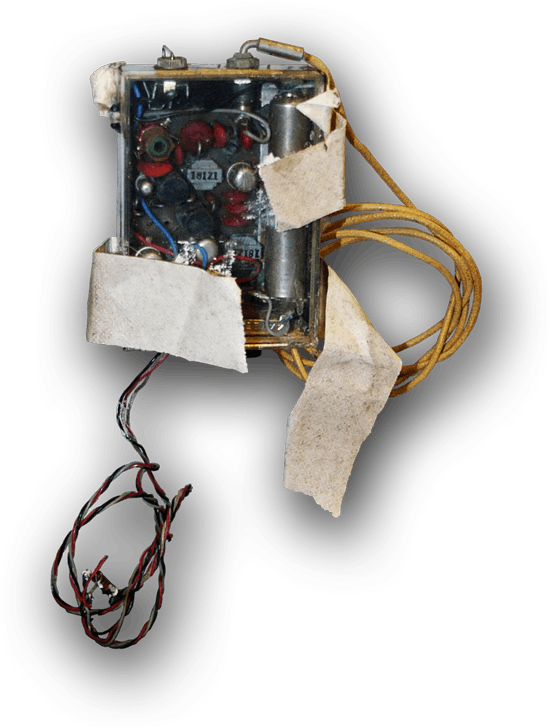Statistics and DataCasino Mathematics
Soon after their initial discovery, mathematicians started applying the laws of probability to many different parts of life – including casino games.
One of these mathematicians was
Roulette consists of a wheel with the numbers from 1 to 36 coloured in red and black, as well as a green 0. A ball rolls around the outside and randomly lands on one of the numbers. Gamblers can bet on a single number, a set of multiple numbers, or just a colour. Their potential winning depends on the likelihood of each of these outcomes.
Here is one of the many hundreds of newspaper extracts which Pearson collected and analysed. At first sight, it looks pretty random:
Roulette results on 19 August 1823, Table 5:
A roulette wheel has the same number of red and black numbers. If we ignore the green 0 (which means the casino wins) we would expect the number of red and black numbers to be
This looks pretty evenly distributed – there is a small difference between the number of red and black results, but that is always to be expected in probability.
However, Pearson didn’t stop here. He realised that if the results were completely random, then each of the four possible pairs of two consecutive colours should also be equally likely. Again we can count the number of occurrences in our example:
For some reasons, it seems that RR and BB happen much
It gets even worse if we look at triples of results. Each of the 8 possible triples of colours should be equally likely, but that is clearly not the case here:
It seems that in this particular casino, the colours alternate much more often than one would expect. There are hardly any long sequences of the same colour (RRR or BBB).
Pearson calculated that the probability of seeing results which were this skewed was less than 1 in 100,000,000! He assumed that the Roulette wheels were rigged to create higher profits for the Casino – and wrote many angry letters to expose this scam.
When he finally travelled to Monte Carlo, he discovered that the reason for the skewed results was of a very different nature: the journalists who were supposed to be recording the results were instead just sitting in the bar of the casino, drinking, and making up random colours…
This story shows that we humans tend to be quite bad at coming up with random-looking data: we often underestimate unlikely events (long sequences of the same colour) and overestimate likely ones (alternating colours). This can be used effectively to detect fraud in banking and insurance.
Here you can try for yourself if you are better than the journalists: write down a sequence of Rs and Bs, and find out how random it really is:
Randomness Score: 100/100
While Pearson only analysed previous Roulette results, others tried to use mathematics to increase their chances of winning in casinos. One of these was
He later turned his focus to Roulette: believing that, if you knew the exact position and speed of the ball in a Roulette wheel, you should be able to use Physics to approximately predict the outcome. After the dealer sets the roulette wheel spinning, there are just a few seconds when you are still allowed to place new bets. Unfortunately this time is much too short for humans to calculate the outcome in their head.


At the Massachusetts Institute of Technology, Thorp discussed his ideas with
The computer was roughly the size of a pack of cigarettes and strapped around their waist. A set of wires ran down to their shoe, which they tapped whenever the ball crossed a certain marker on the roulette wheel. That allowed the computer to calculate its speed, and predict where it would end up. Another set of wires led from the computer to an earpiece, which produced different tones based on different outcomes.
During the summer of 1961, Thorp and Shannon successfully tried their computer in Las Vegas. But while they made some money, the computer – which even contained parts of model airplanes – was not robust enough to be used at a larger scale.
Thorp wrote about their results in a scientific paper, and of course, computers were later forbidden in casinos. Thorp even got banned from all casinos in Las Vegas, but by then he had already moved on to yet more profitable ventures: using mathematics and computers on the stock market.